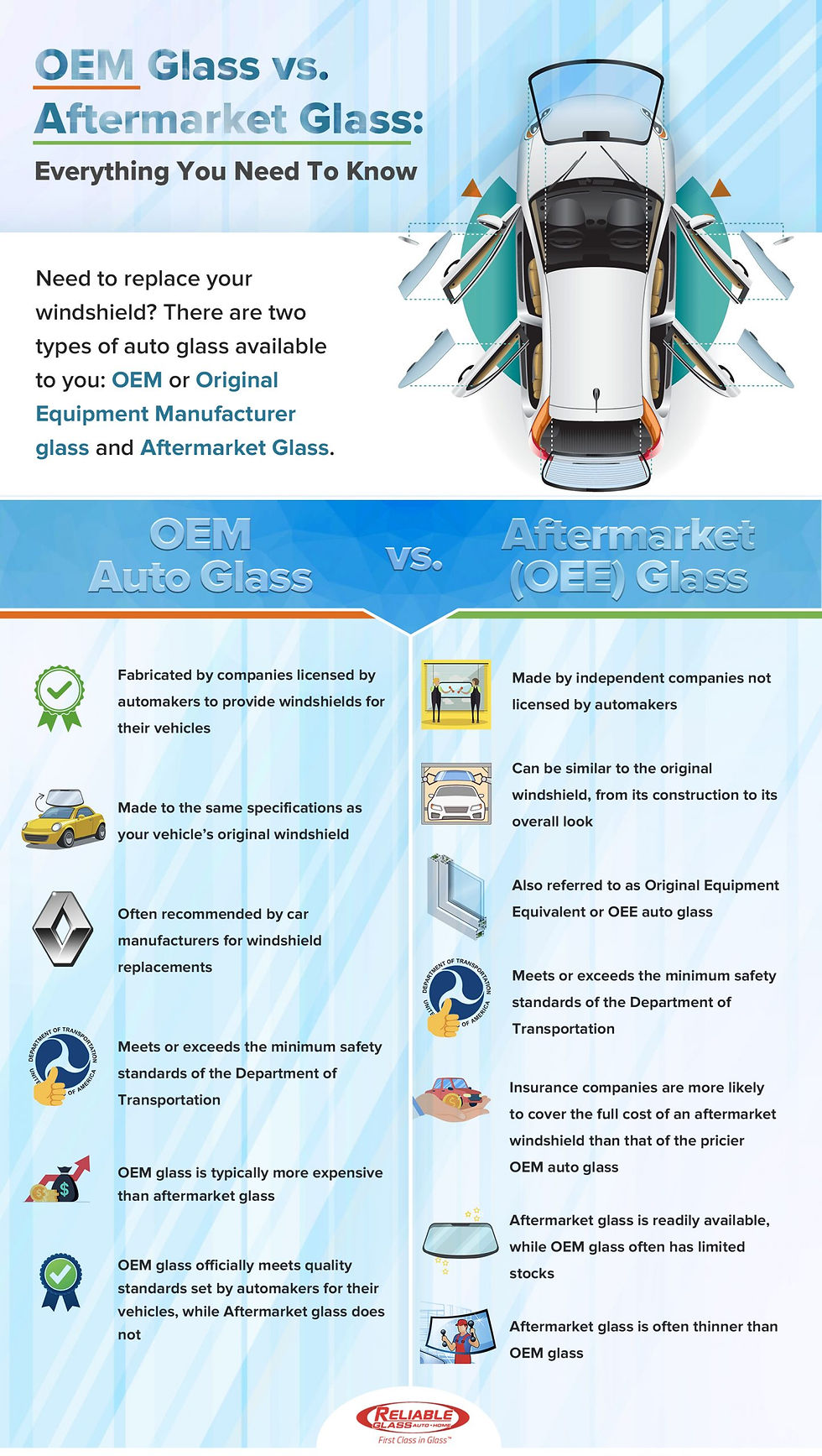What’s the Difference Between OEE and OEM Autoglass?
- Ryan Patzak
- Jan 25, 2023
- 2 min read
Updated: Jan 25, 2023

Brought to you by

When it comes to replacing your autoglass, there are two main types of glass that you can choose from: original equipment manufacturer or OEM autoglass, and original equipment equivalent (OEE) autoglass. Both are available on the market but they have distinct differences that you should be aware of before making a purchase. Let’s take a closer look at what sets these two types of autoglass apart.

OEM Autoglass
The first type of glass is original equipment manufacturer (OEM) autoglass. This type of glass is exactly like the one that came with your car when it was purchased new, meaning that it has been made by the same company as the vehicle itself. It is designed to fit perfectly into your car and provide maximum safety. OEM glass also meets all government regulations for safety standards since it was made specifically for your car. The only downside to this type of glass is that it tends to be more expensive than other types on the market due to its quality and precision in design.
OEE Autoglass

The second type of glass is original equipment equivalent (OEE) autoglass. This type of glass is not made by the same company as your vehicle but rather a third-party vendor who specializes in producing automotive parts such as windows, mirrors, and windshields. OEE glass is designed to fit into your car just like OEM glass would but at a lower cost since it isn’t made by the same company as your car’s manufacturer. Sometimes it is made by another company's glass manufacturer such as GMC, Ford, Audi, Honda, BMW. It also meets all government safety regulations but may not provide as much protection as OEM glass due to its lower quality construction materials.
Brand Quality Rank:
Sekurit Saint-Gobain (OEM - International Vehicles)
Pilkington (OEM + Aftermarket - International and Domestic Vehicles)
Guardian (OEM - Domestic Vehicles)
Fuyao (OEM + Aftermarket - International and Domestic Vehicles)
AGC (OEM + Aftermarket - International and Domestic Vehicles)
Mopar (OEM + Aftermarket - Domestic Vehicles)
Carlex (OEM + Aftermarket - International and Domestic Vehicles)
Carlite (OEM - Domestic Vehicles)
AP Tech (OEM + Aftermarket - Domestic Vehicles)
PGW (OEM + Aftermarket - International and Domestic Vehicles)
ATI (Aftermarket - International and Domestic Vehicles)
Vitro (Aftermarket - International and Domestic Vehicles)
TriVal (Aftermarket - International and Domestic Vehicles)
XYG (Aftermarket - International and Domestic Vehicles)

When it comes time to replace your auto glass, there are two main types available on the market – OEM and OEE auto glass – both with distinct advantages and disadvantages depending on what you need out of them. If you need top-of-the-line quality then an OEM window may be best for you, however if you're looking for something more budget friendly then an OEE window may be more suitable for your needs. Ultimately, both types will provide adequate protection while driving so make sure to evaluate each one carefully before making a decision!




Comments